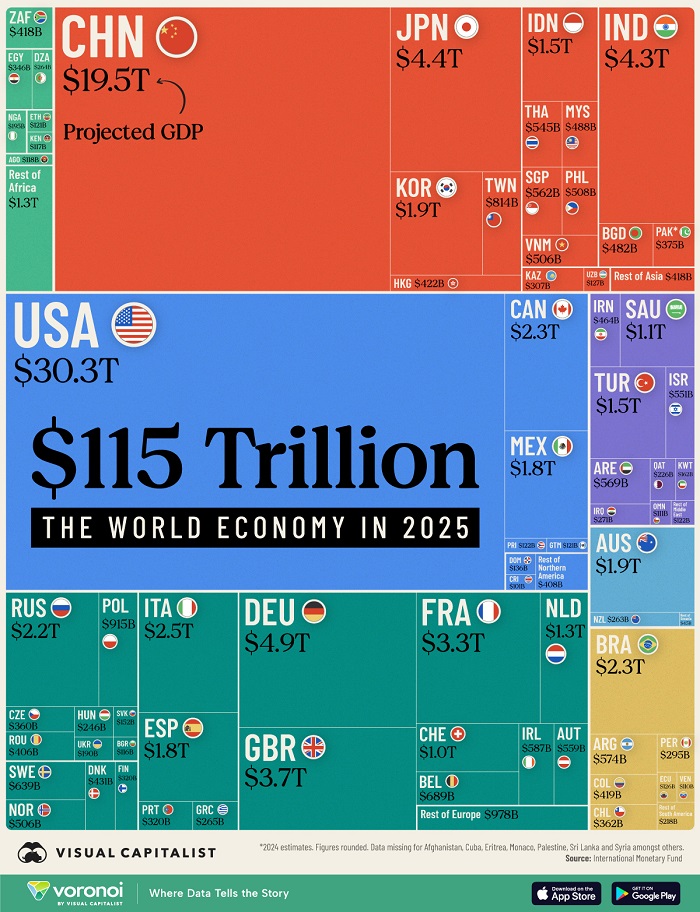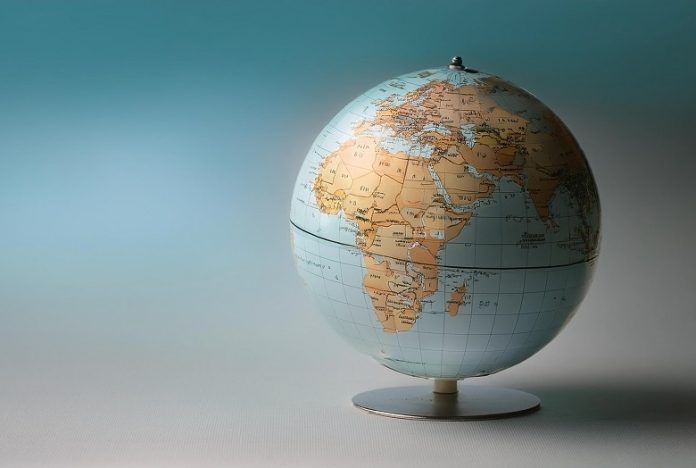There’s nothing quite like a large chart to dive deep into economic data. This analysis takes a closer look at the $115 trillion global economy of 2025, examining how it breaks down by country. The data is sourced from the International Monetary Fund’s (IMF) GDP estimates for 2025, with the exception of Pakistan. All figures are presented in nominal USD and rounded for clarity.
Ranking Countries by GDP in 2025
 The Leaders of the Economy
The Leaders of the Economy
The United States, maintaining its status as the world’s largest economy for over a century, holds the top position with a GDP of $30.3 trillion. China follows in second place with $19.5 trillion, continuing its 15-year streak in this spot. Together, these two economic giants account for 43% of the world’s GDP, underscoring their unparalleled influence on the global stage.
Shifts in the Top Five
Recent years have seen notable changes in the rankings of the top five economies. Germany, with a GDP of $4.9 trillion, overtook Japan ($4.4 trillion) in 2024 to secure the third position. Meanwhile, India, with $4.3 trillion, surpassed the United Kingdom ($3.7 trillion) in 2020 to become the fifth-largest economy.
These rankings are expected to remain steady through 2026. However, projections indicate that India will overtake Japan in 2026 and Germany in 2028, securing the third position by then.
Developments Around the Top 10
Australia is projected to surpass Spain for the 13th spot in 2025, while Brazil is anticipated to climb into the top eight by 2028, reflecting the dynamic changes within the global economy.
The Significance of the Numbers
These figures highlight not only the distribution of economic power worldwide but also the shifting dynamics in global markets. India’s remarkable rise, for instance, stands out, while the continued dominance of the U.S. and China in the first and second positions, respectively, reinforces their pivotal roles.
This data, derived from IMF estimates, provides a valuable lens through which to understand the evolving economic landscape of the future. In a rapidly changing world, analyzing such trends is vital to grasp the opportunities and challenges ahead.
Source: www.visualcapitalist.com






































